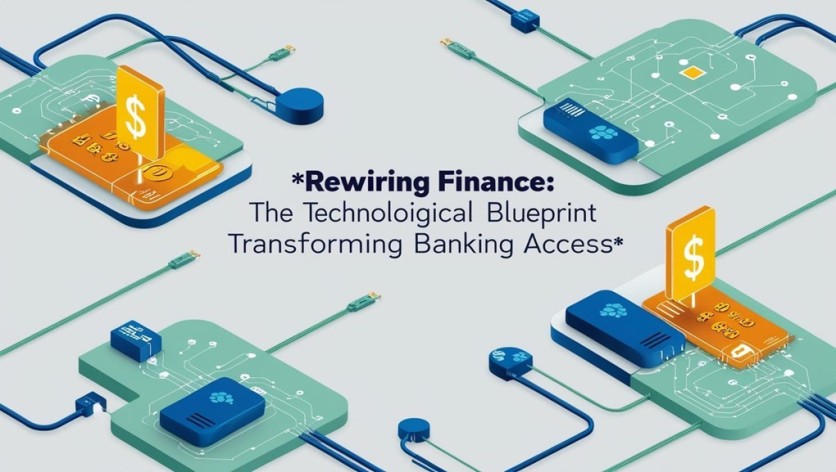
Open Banking is redefining how financial data is accessed, shared, and secured—paving the way for a more connected and transparent financial ecosystem. This shift is not only technical but also strategic, as institutions adapt to an environment built on trust and innovation. Krishna Mula, a recognized thought leader in financial technology, presents a compelling exploration of this transformation and offers a roadmap for the future of digital finance.
Rethinking the Banking Backbone
The traditional banking ecosystem is undergoing a major overhaul. Open Banking is replacing legacy systems with layered architectures incorporating integration layers, secure APIs, and flexible authentication protocols. Institutions are deploying standardized RESTful APIs supported by OAuth 2.0 and OpenID Connect to enable secure, consent-based data sharing. These changes shift the paradigm from siloed data to interoperable ecosystems, providing developers with sandboxes and documentation to accelerate application innovation.
Fortifying the Digital Gateway
Security is central to Open Banking. Instead of relying solely on perimeter defenses, institutions now embrace multi-layered architectures. These models implement encryption standards like AES-256 and combine knowledge and possession-based authentication. They also deploy cryptographic techniques to bind authentication to specific transactions. Performance monitoring plays a key role, with requirements such as 99.5% uptime becoming standard. These expectations elevate security posture and demand optimized infrastructure to avoid bottlenecks during multi-factor authentication flows.
Streamlining Consent and Control
User consent is no longer a checkbox; it's a dynamic, multi-level process. Consent management systems now offer granular control, allowing account-level or transaction-specific permissions that can be time-bound. These systems provide audit trails that track when and how consent is granted or revoked. However, a challenge remains: timely consent revocation across distributed systems to ensure customer data isn't accessible beyond the permitted window.
Embedded Innovation in Real Time
Open Banking has enabled advanced financial innovations that go beyond data access. AI models analyze transactions to predict behavior with 87% accuracy, while conversational interfaces powered by natural language processing improve user engagement. Real-time payments are cutting merchant transaction costs by up to 69%. These systems are made possible through APIs that handle authentication and payment initiation efficiently, even as they deploy behavioral biometrics to manage fraud.
Integration Beyond Banking
The blending of financial services into broader consumer experiences—also known as embedded finance—is gaining momentum. With point-of-sale financing, embedded insurance, and API-driven treasury systems, users access financial tools when and where they need them. These offerings show substantial impact: point-of-sale financing has increased transaction value by 76%, while embedded insurance sees more than double the conversion rate of traditional models. These systems require orchestration across APIs and risk analytics, ensuring seamless yet secure experiences.
Navigating a Patchwork of Regulations
Regulatory compliance is one of the most complex aspects of Open Banking, especially for cross-jurisdictional operations. Mandates like PSD2 in Europe have driven the need for dedicated interfaces and Strong Customer Authentication, but inconsistent technical standards create integration barriers. Institutions are deploying adapter patterns to bridge differences, reducing costs, and maintaining operational coherence. Compliance monitoring is now a technical endeavor, requiring audit trails and anomaly detection systems capable of supporting audits and oversight.
Toward the Future of Open Finance
Open Banking is evolving into Open Finance, an expansive ecosystem including insurance, investments, and pensions. This progression demands enhanced data models, consent mechanisms, and risk management strategies. Infrastructure must support alternative data sources to improve inclusion, particularly for underbanked populations. Advanced architectures, including decentralized identity frameworks and verifiable credentials, promise greater security and user control while streamlining cross-border authentication.
A Roadmap for the Digital Financial Era
Open Banking's transformation is not just about technology—it's about redefining roles, expectations, and interoperability. Institutions adopting structured approaches—layered security, robust API governance, consent orchestration, and adaptive compliance—are mitigating risks and capturing new opportunities.
In conclusion, AI-driven security, dynamic user engagement, and decentralized identity systems will become the backbone for future-ready ecosystems. These systems, anchored in the foundational work outlined by Krishna Mula, hold the potential to democratize financial services globally. In a world where access, control, and security coexist, his insights offer a mirror to today's challenges and a window to a more inclusive digital future.
ⓒ 2025 TECHTIMES.com All rights reserved. Do not reproduce without permission.





